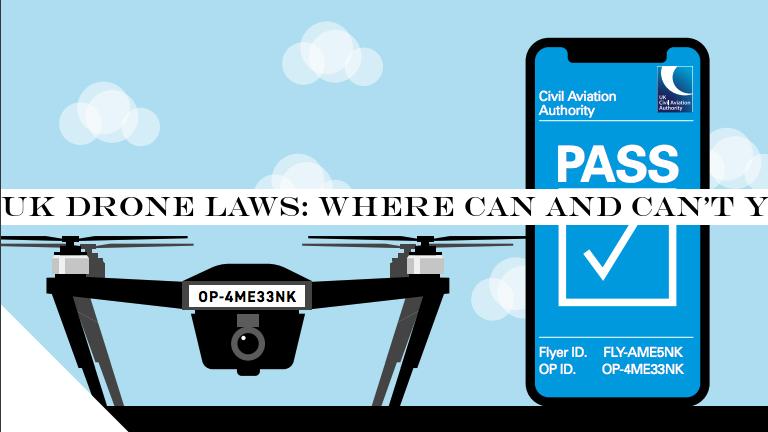INSUBCONTINENT EXCLUSIVE:
Keeping track of the latest UK drone laws can be tricky, with new legislation and police powers recently changing the legal landscape for
Luckily, we've rounded up all of the latest drone law changes, and also suggested the best apps to help you decide where to safely fly your
(Not in the UK? Scroll down to the end of the page to find out about drone laws in your region).Using a drone to capture aerial stills and
for its first flight; there are a number of important tasks you need to perform to ensure you're abiding by the latest UK drone laws.With
your drone in direct sightDon't fly higher than 120m above groundAvoid flying closer than 50m to people, buildings and carsDon't fly closer
than 150m to buildings and crowds of peopleYou now need a drone operator ID for drones between 250g-20kgThe most important basic information
to familiarize yourself with is the Drone Code, which clearly outlines what you should and should not do when flying a drone
This information also makes it clear where you can and cannot legally fly your drone
visual line of sight and fly no more than an altitude of 400ft (120m) and a distance of 500m (1640ft)
With most drones, you can set these parameters to stop you from exceeding them.When flying you should never fly closer than 50m (150ft) to
Civil Aviation Authority has published a three-page Drone Code with handy visual guides like this
(Image credit: CAA)For airports, things are a little different for obvious reasons
These include around airports, critical infrastructure and military installations
per yearThe online test only needs to be taken every three yearsThe DJI Mavic Mini's 249g weight means it doesn't need a flyer IDNew UK
drone laws came into effect on 30 November 2019
These require anyone who flies a drone that weighs between 250g and 20kg to take an online safety test consisting of 20 multiple choice
operator ID must be displayed clearly on your drone(s)
only needs to be taken every three years
For more information about the new laws, to take the online test and obtain operator and flyer ID visit the official Civil Aviation
They also have new stop and search powers around airports, prisons and other restricted locations.Drone pilots could face on the spot fines
permissions and exemptions and, of course, for flying dangerously and/or in restricted locations.(Image credit: Future)All new DJI drones
over 250g will include AirSense technologyThis system will help alert you to any aircraft within miles of your droneNATS Drone Assist and
the Drone Code and a dose of good old fashioned common sense will keep you, your drone and everyone safe.In the near future, DJI will
introduce a new alert system into consumer drones called DJI AirSense
This system uses ADS-B (Automatic Dependent Surveillance-Broadcast) technology, which is used in aeroplanes and helicopters, to provide
drone pilots with location data from nearby aircraft fitted with ADS-B transmitters
This flight data will be provided through DJI flight apps to alert drone pilots of potential risks to allow them to respond
accordingly.There are also a number of third-party apps that make safe flight planning quick and easy
Commercial Operations (PfCO) licence holder)
essential app because it allows you to locate your current position using GPS, or to search for a planned location in advance
It shows restricted airspace, NOTAMs (notices to airmen) which are temporary warnings, and rules governing airspace, as well as ground
Basically, this app tells you whether or not you can fly your drone safely and legally.Download NATS Drone Assist for AndroidDownload NATS
Drone Assist for iOS(Image credit: Future)UAV ForecastUAV Forecast is a weather app aimed directly at drone pilots and gives you a range of
July 2020, new European drone regulations are scheduled to start in the UK, despite the UK having left the EU
This will see the UK align with the European Aviation Safety Agency
In a nutshell, the new rules will see drastic changes in the differences between leisure/hobbyist and commercial flights, with a greater
emphasis on the type of drone(s) you have and where you intend to fly
as flights themselves being categorised
The aim is to make things simpler, and indeed safer, than they are now
But like with anything new, only time will tell how effective this new approach will be
So, until then, just make sure you follow the Drone Code and register yourself as a drone flyer, and you'll be home and dry for the
foreseeable future.US and Australian drone lawsThese drone law guidelines are only applicable to the UK
If you live in the US or Australia, then follow the links below to learn more about the drone laws that are relevant to you:US drone
lawsAustralian drone lawsi9WqNBQD9sTkKWJJDHumYm.jpg?#

